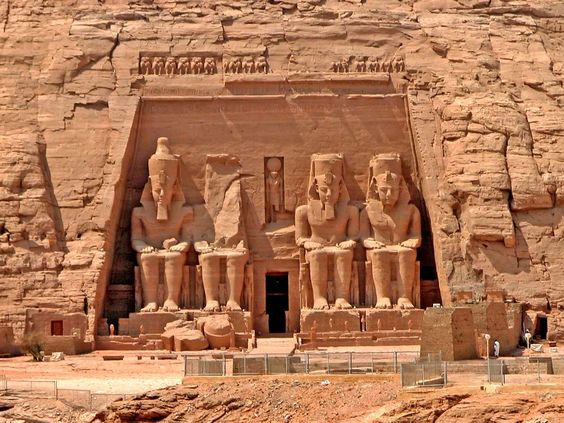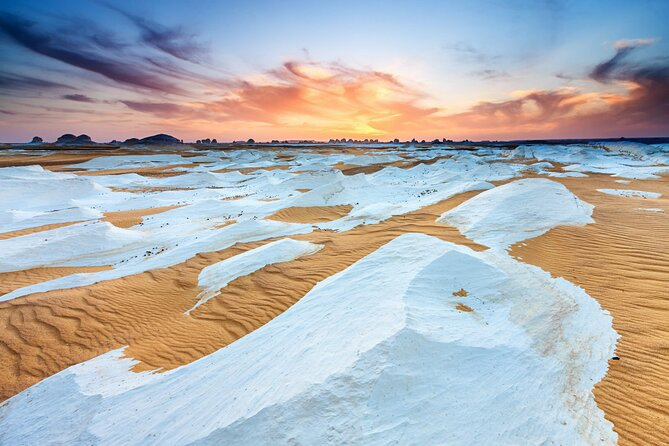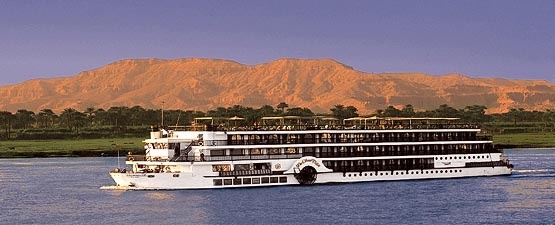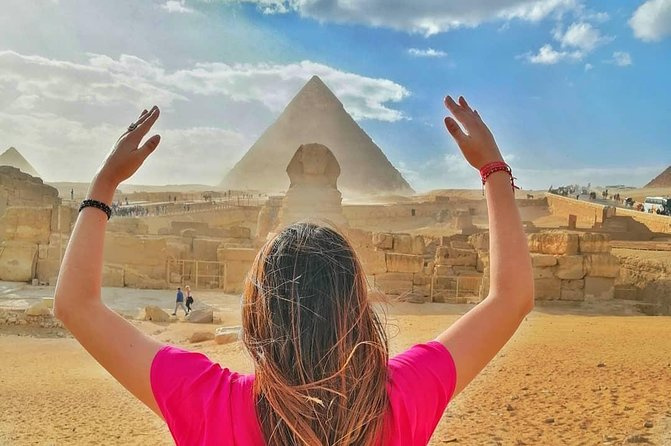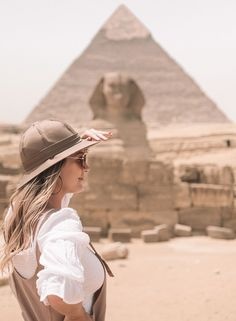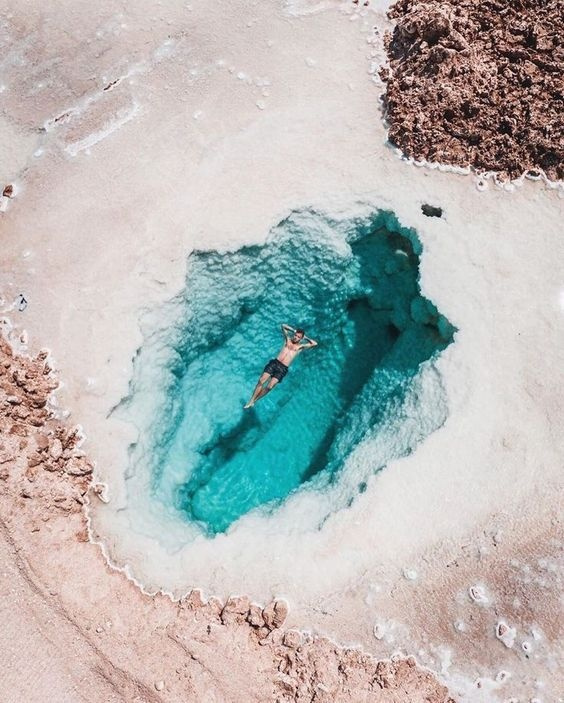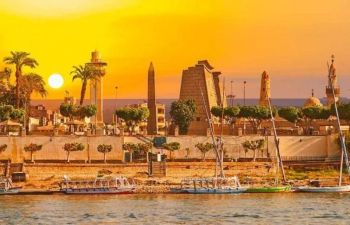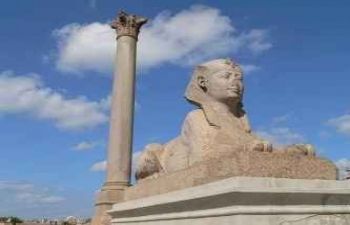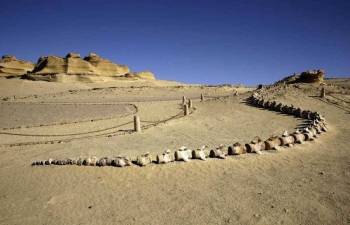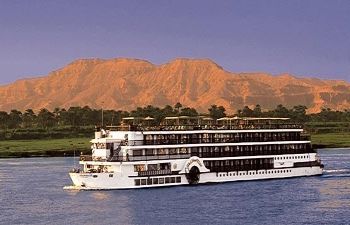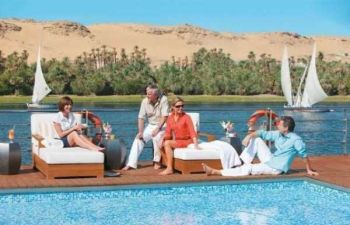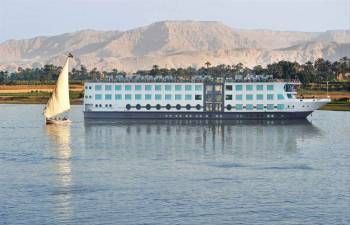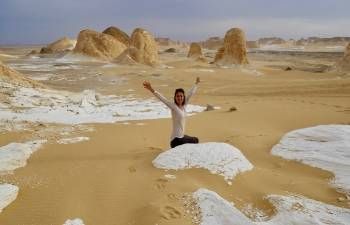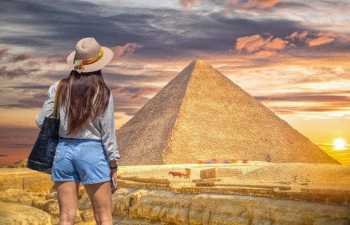14 Days Egypt Overland Itinerary
14 Days Egypt overland Itinerary, Visit Cairo, The Pyramids of Giza, Alexandria, Fayoum oasi,wadi el Hitan,Travel to El Minya Visit Tell Amarna, Sohag,Abyods, explore Luxor,the Valley of the Kings,Karnak,then Visit Aswan attractions and Abu Simbel

14 Days Egypt overland Itinerary, Visit Cairo, The Pyramids of Giza , Alexandria , Fayoum oasis, wadi el Hitan, Travel to El Minya Visit Tell Amarna, Sohag, Abyods, explore Luxor , the Valley of the Kings, Karnak ![]() , then Travel to Aswan, Visit Esna, Edfu and Kom Ombo, then Visit Aswan attractions and Abu Simbel
, then Travel to Aswan, Visit Esna, Edfu and Kom Ombo, then Visit Aswan attractions and Abu Simbel
Egypt Tour Packages representative will meet & assist you at Cairo International Airport, Transfer to the hotel by private air-conditioned vehicle
Depends on your arrival. If you have an early flight to Cairo you can contact us to make a tour suggestion. Free evening
Overnight in the Hotel

You will be picked up from your hotel in Cairo by our tour guide to enjoy a great excursion to The Pyramids of Giza ( Cheops , Chephren, and Mykerinus ) Then proceed to visit the Great Sphinx, which dates back to the time of and visit the Valley Temple .
Lunch will be served during the Pyramids at the local restaurant in Giza
The Pyramids Of Giza:
Necropolis is located southwest of Cairo. The Giza Plateau has been used by rulers of Old Kingdoms, The oldest know Mastaba is Mastaba v which probably dates to the reign of the 1st Dynasty, the ruler Djet( 2900 B.c)
1- THE GREAT PYRAMID OF CHEOPS ( KHUFU 2586-2566)
Pharaoh Khufu began the first Giza pyramid project, circa 2550 B.C. His Great Pyramid is the largest of the three in Giza and towers some 481 feet (147 meters) above the plateau. Its estimated 2.3 million stone blocks each weigh an average of 2.5 to 15 tons with a base length of more than 230 meters (750 feet) per side. The greatest difference in length among the four sides is a mere 4.4 cm (1 ¾ inch) and the base is level within 2.1 cm (less than an inch), an astonishing engineering accomplishment.
2- THE PYRAMID OF CHEPHREN (SON OF RA)
Pharaoh Khafre, also known in history by the Greek name Chephren, The third pharaoh of the 4th Dynasty during the Old Kingdom Period of Ancient Egypt around 2540 BC was the son of Khufu who built the second pyramid at Giza. His necropolis also included the Sphinx, a mysterious limestone monument with the body of a lion and a pharaoh's head. The Sphinx may stand sentinel for the pharaoh's entire tomb complex.
3- THE PYRAMID OF MYKERINUS (MENKAURA)
The third and smallest of the great pyramids at Giza is credited to the pharaoh Menkaure (Mycerinus in Greek). It is thought to have been completed at the end of the 26th century BC. Menkaure, like the builders of the other pyramids at Giza, ruled Egypt during the 4th Dynasty during the Old Kingdom Period of Ancient Egypt, rising to a height of 65 meters (213 feet), but the complex preserved some of the most stunning examples of sculpture to survive from all of Egyptian history.
4-THE GREAT SPHINX
The Great Sphinx of Giza is a giant 4,500-year-old limestone statue situated near the Great Pyramid in Giza, Egypt. Measuring 240 feet (73 meters) long and 66 feet (20 meters) high, the Great Sphinx is one of the world’s largest monuments. It is also one of the most recognizable relics of the ancient Egyptians, though the origins and history of the colossal structure are still debated.
Then visit the Egyptian Museum
The Museum of Egyptian Antiquities in Tahir:
It exhibits a rare collection of over 250,000 genuine artefacts that date as far back as 5000 years, including an exclusive exhibit dedicated to Tutankhamen - A collection of treasures, gold, and jewellery that were buried in his tomb for over 3,500 years before they were discovered in 1920 when his tomb was excavated.
If you wish to visit the mummies' royal hall, where you will have the feeling of strolling down the valley of the kings where most of these mummies were originally resting then ask your tour guide to take you to the National Museum of Egyptian Civilization. It will cost 50 $ Extra per person.
Overnight in the Hotel Cairo
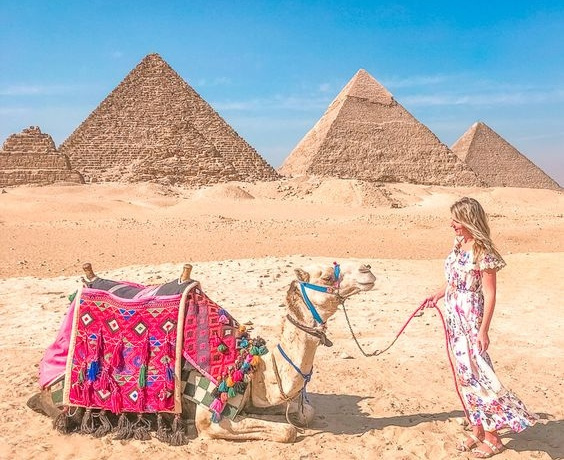
Pick Up time from your hotel in Giza at 08:00 am with your Egyptologist tour guide, Enjoy a fantastic orientation tour of Cairo on an 8-hour excursion that takes in the major monuments of Old Cairo and the maze of streets and stalls of the historic Khan El Khalili Bazaar., Saladin Citadel : you will drive up to the Saladin Citadel, constructed by Salah al-Din on the Moqattam Hills in 1183 AD as a defense against Crusader armies. Known for its fresh air and sweeping views of Cairo, it is now a preserved historic site of mosques and museums, including the Mosque of Muhammad Ali Pasha Mosque of Muhammad Ali Pasha : Designed by the Turkish architect Yousif Boushnaq, who came to Cairo especially from Istanbul to build the great building, the mosque's alabaster structure stands in beautiful contrast to the sandstone city. Lunch will be served in a local restaurant in Old Cairo Coptic Cairo : Then, visit Old Cairo to see major attractions such as the Hanging Church, the Ben Ezra Synagogue, the Church of St. Barbara, and the Church of Abu Serga, one of the oldest Coptic churches in Cairo Khan el-Khalili Bazaar: Continue to the Khan el-Khalili Bazaar, one of the oldest bazaars in the Middle East. Discover a maze of alleys that have been at the center of Cairo’s trading activities since the 14th century. , Meals: Breakfast & Lunch Overnight in Cairo
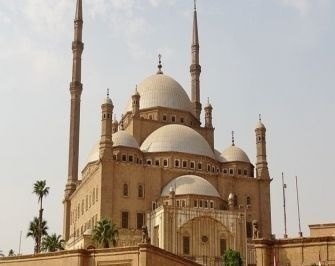
Start your private tour to Alexandria from Cairo, starting at 7:00 am with Pickup from your hotel by our Egyptologist, and transfer by Private A/C Vehicle to Alexandria , The distance is 220 km Northwest of Cairo. Arrive at Alexandria around 10 am.
Start your day Tour in Alexandria Visiting The Roman Catacombs of Kom el Shoqafa
The Catacombs Kom el Shoqafa :
Archaeologists believe that the Catacomb of Kom el Shoqafa was started in the 2nd century A.D. and was used to intern the dead for the next 200 years. This was a period in the history of the city of Alexandria when there was a great mixture of different cultures. Of course, there was the ancient history of the great Egyptian kingdoms which went back thousands of years
Pompey Pillar:
Has nothing to do with Pompey. The story behind the name refers to the possible burial ground of the Roman general when he fled to Egypt and was assassinated after losing a major battle in Greece against Caesar. The red granite column was probably built to honour Emperor Diocletian. Today it stands 25 meters high and is the tallest ancient monument in Alexandria
The Citadel of Sultan Qeitbay:
The Citadel was built in the 15th Century by the Mamlouk Sultan Qeitbay, To Guard the City against the threat of Crusaders, This wonderful Islamic Monument was built by the use of the ruins of the old Lighthouse that was constructed by Ptolemy 11 in the 3rd Century B.c. The Lighthouse was damaged during an Earthquake that Occurred in Egypt in 1303 A.c during the reign of the Mamlouk King Qeitbay
Lunch in Alexandria in Egyptian Restaurant
The new Library of Alexandria :
The Library of Alexandria was reborn in October 2002 to reclaim the mantle of its ancient namesake. It is not just an extraordinarily beautiful building; it is also a vast complex where the arts, history, philosophy, and science come together. Moreover, the myriad activities it offers have made it a place for open discussion, dialogue, and understanding.
Meals: Breakfast in the hotel and Lunch during the trip
Overnight in Cairo
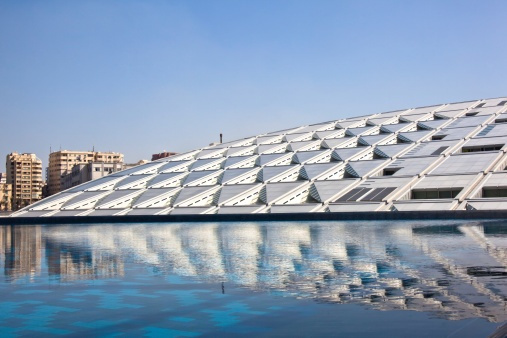
At 07:00 Am pick up from Cairo airport transferred by air-conditioned Car to El Fayoum Oasis in the Western Desert Desert Trip to Wadi El Hitan
From: Cairo, Egypt.
To: Tunis Village, Youssef Al Seddik, Egypt.
Driving distance: 122 km.
Duration: 1 hour 55 mins.
Start your adventure by Toyota land cruiser 4x4 to Wadi Al Hitan ![]() Wadi-Al-Hitan
Wadi-Al-Hitan
From: Tunis village in Fayoum, Egypt.
To: Wadi Al-Hitan (Whale Valley), Egypt.
Driving distance: 69.2 km.
Duration: 1 hour 37 mins
Wadi Al Hitan ![]() Wadi-Al-Hitanis a Protected area and a Natural Heritage Site added in 2005 by UNESCO as a world heritage site, WADI EL-HITAN is also known for scientists in the Zeuglodon Valley, was discovered in 1936, it is located 35 KM west of the Wadi El-Ryan, right deep into the desert western desert, is It is an area of fossils; considered as an open museum, dates back to 45 million years and contains petrified primitive whales skeletons, shark teeth, shells and roots of Mangroves preserved in soft rocks. Everywhere you go here you find petrified sea shells and corals, Visit the Fossil & Climate Change Museum
Wadi-Al-Hitanis a Protected area and a Natural Heritage Site added in 2005 by UNESCO as a world heritage site, WADI EL-HITAN is also known for scientists in the Zeuglodon Valley, was discovered in 1936, it is located 35 KM west of the Wadi El-Ryan, right deep into the desert western desert, is It is an area of fossils; considered as an open museum, dates back to 45 million years and contains petrified primitive whales skeletons, shark teeth, shells and roots of Mangroves preserved in soft rocks. Everywhere you go here you find petrified sea shells and corals, Visit the Fossil & Climate Change Museum ![]()
The museum hosts a variety of whale fossils, and skeletons that are displayed outdoors, as for the museum it has a variety of fossils, skeletons, fossilized mangroves, and ancient seashells exhibited indoors in glass boxes
At 12:00 Enjoy your lunch
Drive to The Magic lake and Gebel Al-Mudawara
The Magic Lake:
One of the most beautiful lakes in Egypt, overlooking sand dunes, is the Magic Lake. Around the lake gives you the chance to witness one of the most eye-catching sunsets you will ever see.
The Magic Lake is a beautiful lake located in Wadi El Rayan in Fayoum. It was named the Magic Lake as it changes its colours several times a day depending on the time of year and the amount of sunlight it receives.
It is an amazingly beautiful place surrounded by desert. People spend their time hiking & sandboarding beside Magic Lake or even swimming in the lake itself.
The lake contains minerals that are said to help treat patients with rheumatism.
It’s simply a magical place for a magical trip.
Gebel Al Mudawara
Seven Kilometres south of the waterfall, Along the left-eastern side of the road, Is a picturesque Area known as Al Mudawara, The Lookout, There are three Mountain along the lakeshore, and it is a favourite Picnic Area
Wadi El Rayan:
Wadi El Rayan is a depression 42 Meters below sea level and covers 673 km. In 1966 this depression became a water reservoir when it was connected with Qarun Lake by an underground Pipe
Tea time by sunset- Bbq Dinner and overnight in the Camping
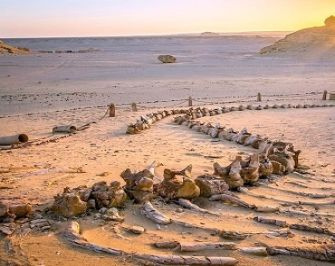
Enjoy a Private day trip to Al Minya from Cairo, Al Minya is one of the most important archaeological sites in Egypt Pick up time from the hotel or the camping in Fayoum, You will Visit Tell El Amarna (Akhenaton) the Capital City of the King Akhnaton called by some the heretic king. Then Proceed to the tombs of the high officials during the reign of King Akhnaton and the Royal tomb of King Akhnaton. You will visit also Bani Hassan which is a small Village south of El Minya, Bani Hassan has the amazing tombs of the rulers of the old City, Lunch in Al Minya Overnight in Al Minya
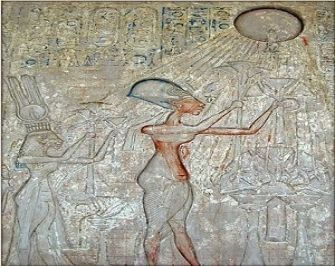
You will be picked up by our tour guide from Al Minya and Drive to Abyods on the way You will visit Tuna el Gebel which is the large site that functioned as the Necropolis for the ancient town of Khum or Hermopolis, The Cemetery was located at 11 K.m from the City, in an area which is perhaps, better known as the northwestern boundary of the Akhnaton`s City of Akhenaton and it is marked by a boundary stela, We will visit the tomb of Petosiris, the high priest of Thoth and the tomb of the Isadora, El Ashmunein was a town of great importance as a cult Center of Thoth, the god of wisdom, healing and writing. During the Old Kingdom, the town was known as Khmunw. It was called Hermopolis Magna Greek god Hermes was associated with Egyptian Thoth, Who dominates the site in the guise of two famous colossal baboon statues. Lunch during the trip, Overnight in Abydos
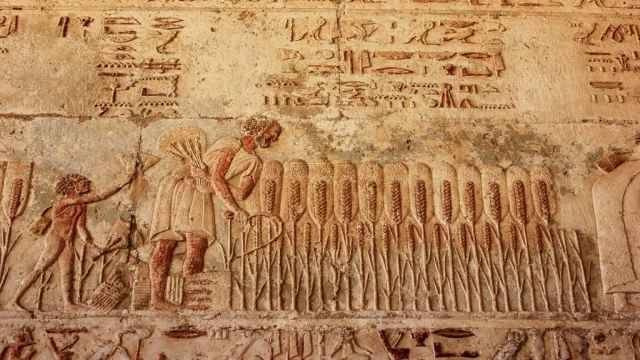
After breakfast, Pick up time from your hotel in Abydos then drive to Abyods
Abydos temple
Considered one of the most important archaeological sites of Ancient Egypt, the sacred city of Abydos was the site of many ancient temples, including Umm el-Qa'ab, a royal necropolis where early pharaohs were entombed. These tombs began to be seen as extremely significant burials and in later times it became desirable to be buried in the area, leading to the growth of the town's importance as a cult site.
Abydos was one of the most important religious sites to ancient Egyptians. Much like modern Muslims hope to complete a pilgrimage to Mecca at least once in their lifetime, ancient Egyptians would have hopes to visit Abydos, which for them was strongly associated with the entrance into the afterlife.
Although there were several temples constructed here, the largest and most significant is known as the Temple of Seti I. Seti I was the father of the great Ramesses II, who actually completed the construction of most of the temple after his father’s death.
Then drive to Dendera temple ?
Dendera temple :
The Temple of Hathor was largely constructed during the Late Ptolemaic period, specifically during the reign of Ptolemy XII and Cleopatra VII. Later additions were made during the Roman period. Although built by a dynasty of rulers who were not native Egyptians themselves, the design of this temple has been found to be in accordance with that of other classical Egyptian temples, with the exception of the front of the hypostyle hall, which, according to an inscription above the entrance, was constructed by Emperor Tiberius.
Apart from these, there are also scenes in the temple complex portraying the Ptolemaic rulers. For example, carved onto the external face of one of the temple walls is a huge relief of Cleopatra VII and her son by Julius Caesar and co-ruler, Ptolemy XV (better known as Caesarion). The two Ptolemaic rulers are shown dressed in Egyptian garb, and offering sacrifices.
Hathor was also regarded as a goddess of healing, and this is evident in the presence of a sanatorium in the temple complex. Here, pilgrims would come to be cured by the goddess. Sacred water (which was made holy by having it poured onto statues inscribed with sacred texts) was used for bathing, unguents were dispensed by the priests of Hathor, and sleeping quarters were provided for those hoping that the goddess would appear in their dreams, and so aid them.
Drive in Luxor and overnight in Luxor :
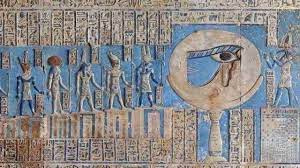
After breakfast Your Egyptologist tour guide to visit the famous Karnak ![]() Karnak
Karnak ![]() Temple:
No site in Egypt is more impressive than Karnak
Temple:
No site in Egypt is more impressive than Karnak ![]() . It is the largest temple complex ever built by man and represents the combined achievement of many generations of ancient builders and pharaohs. The Temple of Karnak
. It is the largest temple complex ever built by man and represents the combined achievement of many generations of ancient builders and pharaohs. The Temple of Karnak ![]() is actually three main temples, smaller enclosed temples, and several outer temples situated on 247 acres of land.
is actually three main temples, smaller enclosed temples, and several outer temples situated on 247 acres of land.
Luxor Temple:
The Temple of Luxor was the centre of the most important festival, the festival of Opet. Built largely by Amenhotep III and Rameses II, the temple's purpose was as a setting for the rituals of the festival. The festival was to reconcile the human aspect of the ruler with the divine office.
Lunch will be served in a local restaurant in Luxor with a Nile view.
In the Evening you can Enjoy An Optional Tour of Sound and Light Show at Karnak ![]() show starts with a historical introduction covering the birth of the great city of Thebes and the erection of the Karnak
show starts with a historical introduction covering the birth of the great city of Thebes and the erection of the Karnak ![]() .
.
The show narrates the glorious achievements of some great Pharaohs as you listen to a magnificent and poetic description of the artistic treasures and great legacy that the Karnak ![]() encloses.
From there will be driven to your hotel for check-in, and leisurely free time in Luxor
encloses.
From there will be driven to your hotel for check-in, and leisurely free time in Luxor
Meals: Lunch
overnight stay in Luxor
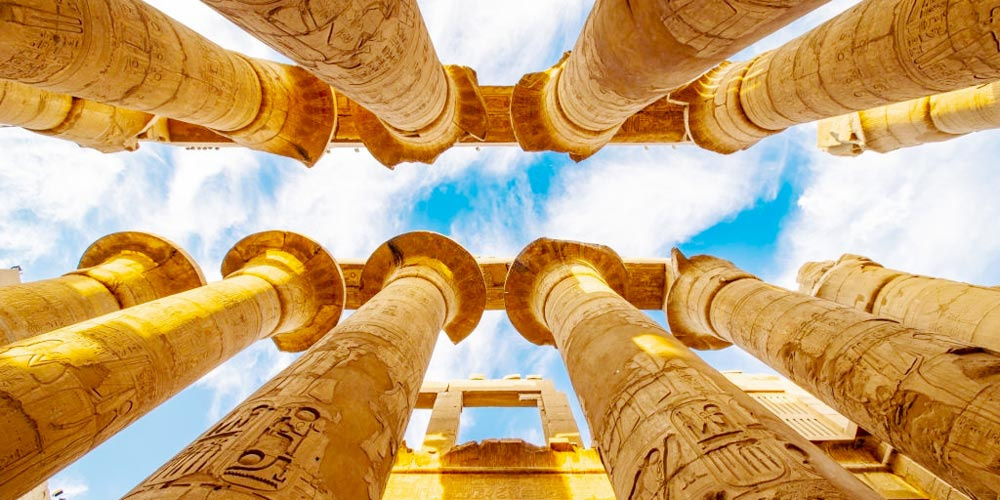
Optional trip Balloon ride over the Valley of the Kings 100 $ per person.
Get your cameras ready for a stunning balloon ride over the historic town of Luxor . Catch the rays of the early morning sun illuminating the city and its surrounding mountains.get a bird's eye view of Luxor 's ancient sites from aboard a hot air balloon
Breakfast on the Nile Cruise and visit the west bank of Luxor and Karnak ![]() .
The Valley of the Kings:
Once called the great Place of the Truth, this valley is called now the Valley of the Kings, It is a Majestic domain of the Pharaohs who once lay in great stone Sarcophagi, awaiting immortality.
The isolated valley behind Deir el Bahri is dominated by the Pyramid-Shaped Mountain Peak.
The colossi of Memnon:
Massive pair statues known as the Colossi of Memnon, rising about 18 M from the plain. They are the remains of what was once the largest complex on the west bank, built by Amenhotep the Third.
The Queen Hatshepsut temple :
Rising out of the desert Plain in a series of terraces. The temple of Hatshepsut Mergs with sheer limestone Cliffs on the eastern face of the Theban Mountain as if nature herself had built this extraordinary monument.
Karnak
.
The Valley of the Kings:
Once called the great Place of the Truth, this valley is called now the Valley of the Kings, It is a Majestic domain of the Pharaohs who once lay in great stone Sarcophagi, awaiting immortality.
The isolated valley behind Deir el Bahri is dominated by the Pyramid-Shaped Mountain Peak.
The colossi of Memnon:
Massive pair statues known as the Colossi of Memnon, rising about 18 M from the plain. They are the remains of what was once the largest complex on the west bank, built by Amenhotep the Third.
The Queen Hatshepsut temple :
Rising out of the desert Plain in a series of terraces. The temple of Hatshepsut Mergs with sheer limestone Cliffs on the eastern face of the Theban Mountain as if nature herself had built this extraordinary monument.
Karnak ![]() :
Karnak
:
Karnak ![]() more than a temple is a spectacular Complex of Sanctuaries, Kiosks, Pylons, and Obelisks. All dedicated to the Theban gods and to the Greater Glory of Egypt`s Pharaohs, Karnak
more than a temple is a spectacular Complex of Sanctuaries, Kiosks, Pylons, and Obelisks. All dedicated to the Theban gods and to the Greater Glory of Egypt`s Pharaohs, Karnak ![]() was the Most Important place for the worship of the Theban Triad(Amun, Mut, and Khonso).
Overnight in Luxor
Meals: Breakfast-Lunch
was the Most Important place for the worship of the Theban Triad(Amun, Mut, and Khonso).
Overnight in Luxor
Meals: Breakfast-Lunch
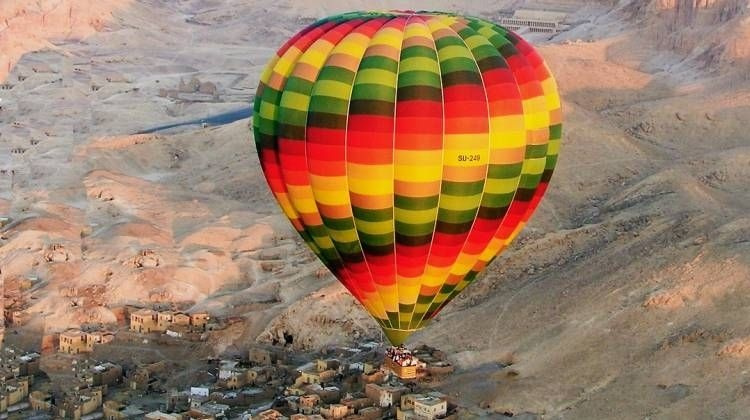
Pick up time from Hotel in Luxor and drive to Edfu , It takes about 2 hours drive to Edfu temple Visit to Edfu Temple Edfu temple Upper Egyptian site dominated by a large well -Preserved temple, dedicated to the hawk-God Horus, The Construction of Ptolemaic temple of Horus, which was founded on the site of a much earlier temple, dated to the period between the reigns of Ptolemy the Third(246 B.c), The descriptions on the walls include the Myth of contending of Horus and Seth(Probably performed annually as a religious Drama. After Lunch, Visit the Edfu temple Edfu temple : Upper Egyptian site dominated by a large well -Preserved temple, dedicated to the hawk-God Horus, The Construction of the Ptolemaic temple of Horus, which was founded on the site of a much earlier temple, dated to the period between the reigns of Ptolemy the Third(246 B.c), The descriptions on the walls include the Myth of contending of Horus and Seth(Probably performed annually as a religious Drama. Drive to Kom Ombo temple Kom Ombo temple : The temple and the associated settlement site are located 40 K.m north of Aswan, the temple was dedicated to the deities Sobek and Horus and dates mainly to the Ptolemaic and Roman periods (332 B.b -395 A.c) Drive to Aswan overnight in Aswan
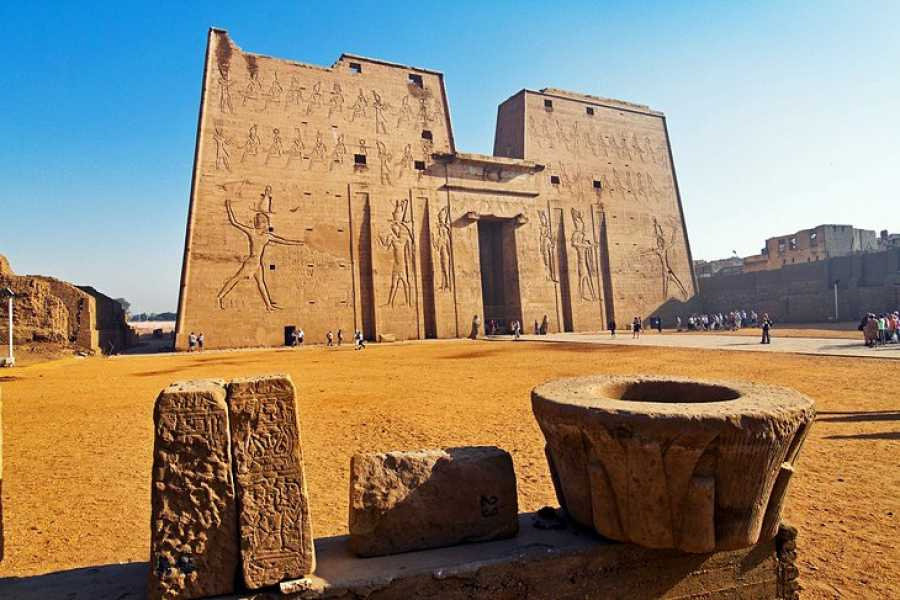
Breakfast and lunch on board the cruise. Early Visit to Abu Simbel from Aswan Abu Simbel temples: The two temples of Ramses the Second and the Queen Nefertari were carved out of the Mountain on the west bank of the Nile between 1274 and 1244 B.c, The Great Temple was dedicated to Ramses the Second, Ra-Harakhty, Amun Ra, and Ptah, with 4 Colossal statues, The second temple was dedicated to Queen Nefertari and Goddess Hathor, and the two temples were dismantled stone by stone and rebuilt on higher ground, The preservation of the two temples of Abu Simbel must Rank as the greatest Achievement of the Unesco. lunch in Aswan at 16:00 sailing trip with Felucca around Elphinatine island and Visit Lord Kitchener island- optional visit to the Nubian village The Nubian village is one of Aswan's attractions. It's worth visiting and spending 2 hours. The place is very authentic and genuine, Colorful and artistic, the Nubian Village will surprise you in every corner! While walking in the village, you will straight away feel the soul of this place! Dinner &overnight in Aswan
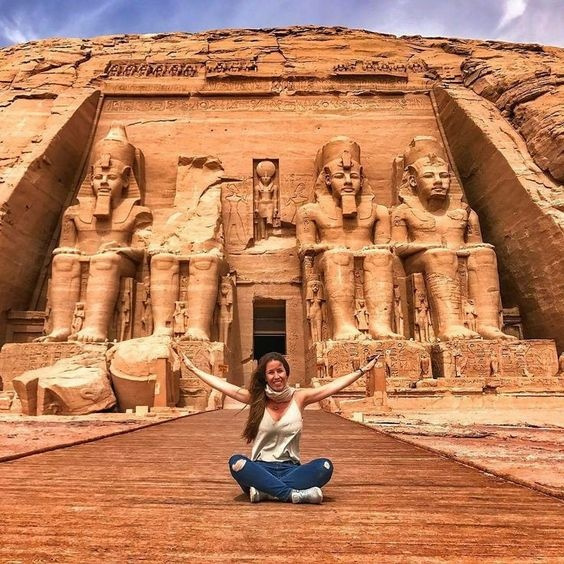
Breakfast in the Hotel 08:00 Proceed with Visits to Aswan including the Temple of Philae and a tour by Felucca around Elephantine, the High Dam, the Unfinished Obelisk Phiala temple: Built to honour the goddess, Isis, this was the last temple built in the classical Egyptian style. Construction began around 690 BC, and it was one of the last outposts where the goddess was worshipped The High Dam: Aswan High Dam is a rock-fill dam located at the northern border between Egypt and Sudan. The dam is fed by the River Nile and the reservoir forms Lake Nasser. Construction for the project began in 1960 and was completed in 1968. It was officially inaugurated in 1971. The Unfinished Obelisk : Aswan was the source of ancient Egypt’s finest granite, used to make statues and embellish temples, pyramids, and obelisks. The large unfinished obelisk in the Northern Quarries has provided valuable insight into how these monuments were created, although the full construction process is still not entirely clear. Three sides of the shaft, nearly 42m long, were completed except for the inscriptions. At 1168 tonnes, the completed obelisk would have been the single heaviest piece of stone the Egyptians ever fashioned. Lunch will be served in Aswan Transfer to the airport fly to Cairo- Overnight in Cairo
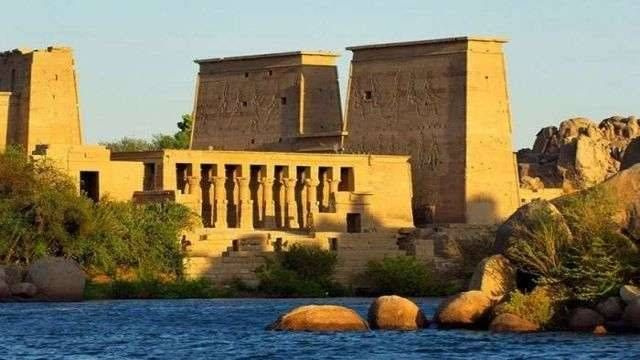
Depart to the Airport from Your hotel in Cairo Meals: Breakfast

Inclusions:
- Pick-up service at Cairo Airport.
- 5 nights at Cairo bed and breakfast basis.
- 1-night camping in Wadi el Hitan or Magic Lake Area ( Full board)
- 1-night at Alminya (bed and breakfast basis)
- 1-night In Abyods (bed and breakfast basis)
- 2 nights at Luxor bed and breakfast basis.
- 2 nights at Aswan bed and breakfast basis.
- An escorted knowledgeable tour guide all over the tour.
- All your transportation during the tour with a private A.C car
- Entering fees for all the mentioned sightseeing on the itinerary.
- Private transfer from Aswan to Luxor.
- All Service Charges and taxes
Exclusions:
- International Airfare.
- Egypt entry visa.
- Tipping
- Optional Tours
Please remember to bring:
- Passports are valid 6 months
- Hat
- Suncreams
- Sunglasses
Reviews
